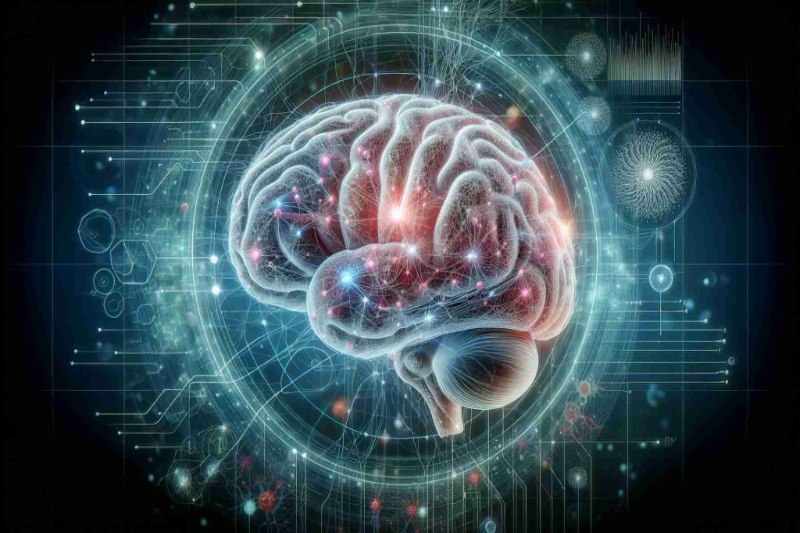A characteristic of the communication networks in the human brain that has not been seen in macaques or mice is the transfer of information across several parallel channels, according to research.
This resulted from a study that blended information and graph theory with diffusion and functional MRI data. In order to compare signal transmission in various mammalian brains, the scientists mapped “brain traffic.”
According to their research, these parallel pathways in humans may be a factor in our highly developed cognitive capacities as well as have implications for our knowledge of the evolution of the brain and its therapeutic uses.
Important Details:
The EPFL study discovered that, in contrast to macaques and mice, human brains convey information along many parallel channels in a unique way.
Information theory, graph theory, diffusion MRI, and functional MRI were combined in a novel way to make this finding.
According to the findings, these parallel pathways may support higher order cognitive processes as well as provide fresh perspectives on neurorehabilitation and brain resilience.
By contrasting the communication networks of the human brain with those of macaques and mice, EPFL researchers discovered that only the human brains used many parallel channels to transmit information, providing new insights into the evolution of mammals.
Alessandra Griffa, a senior postdoctoral researcher at EPFL, enjoys using analogies related to travel when explaining brain communication networks. A polysynaptic route that crosses several different brain regions is created when brain impulses are transferred from a source to a target, “like a road with many stops along the way.”
According to her explanation, networks or “roads” of neural fibers have already allowed for the observation of structural brain connectivity routes. However, Griffa’s goal as a research coordinator at CHUV’s Leenaards Memory Centre and scientist at the Medical Image Processing Lab (MIP:Lab) at EPFL’s School of Engineering was to monitor information transmission patterns to observe how signals are delivered and received. She collaborated with SNSF Ambizione Fellow Enrico Amico and MIP:Lab head Dimitri Van de Ville to construct “brain traffic maps” that might be used to compare the brains of humans and other mammals, as reported in a recent article published in Nature Communications.
In order to do this, the scientists collected functional magnetic resonance imaging (fMRI) and diffusion weighted imaging (DWI) data from humans, macaques, and mice while the participants were at rest and awake.
With the use of the fMRI scans and the DWI scans, the scientists were able to piece together the brain’s “road maps” and observe which brain regions lit up along each one, indicating that the neuronal information was being transmitted across these channels.
Information and graph theory were used to evaluate the multimodal MRI data, and Griffa claims that this creative mix of techniques produced new discoveries.
Our approach is novel in that it employs multimodal data in a single model that unites two fields of mathematics: information theory, which maps information transmission (or “traffic”) over the roads, and graph theory, which explains the polysynaptic “roadmaps.”
“Like the telephone game we played as kids, the basic principle is that messages passed from a source to a target remain unchanged or are further degraded at each stop along the road.”
Information was sent along a single “road” in non-human brains, but there were several parallel channels between the same source and target in human brains, according to the researchers’ methodology. These parallel routes may also be used for individual identification because they were just as distinctive as fingerprints.
“Such parallel processing in human brains has been hypothesized, but never observed before at a whole-brain level,” Griffa summarizes.
Possible discoveries in the fields of evolution and medicine
According to Griffa, the simplicity of the researchers’ model and the way it opens up fresh possibilities for investigation into computational neuroscience and evolution are what make it so beautiful. The results, for instance, are consistent with the idea that the human brain’s capacity has expanded throughout time, giving rise to increasingly intricate patterns of connectivity.
“We might speculate that multiple representations of reality and the capacity to carry out abstract tasks unique to humans are made possible by these parallel information streams.”
She continues by saying that while this theory is merely theoretical and that neither the participants’ computational nor cognitive abilities were tested in the Nature Communications study, these are issues she hopes to investigate further.
“Since we examined the flow of information, modeling more intricate processes to investigate the integration and processing of information in the brain to produce novel entities would be an intriguing next step.”
She is particularly interested in using the model created in the study to explore whether parallel information transmission could give brain networks resilience and possibly aid in neurorehabilitation following brain injury or in preventing cognitive decline in pathologies associated with advanced age. She works as a memory and cognition researcher.
We would like to investigate if the existence of parallel information streams and the difference in cognitive loss experienced by healthy and unhealthy aging can be related to each other, as well as whether these streams could be trained to counteract neurodegenerative processes.
Evidence that human brain networks transmit information more parallelly than those of macaques or male mice
Brain computational capacities underlie nearly every element of behavior, from shared sensory perception among mammalian species to sophisticated cognitive functions in humans. Brain communication is defined as information transmission through white-matter connections.
How have communication tactics evolved over the course of evolution in macroscale brain networks to carry out ever-more-complex tasks?
We demonstrate a brain communication gap between selective information transmission in non-human mammals, where brain regions share information through single polysynaptic pathways, and parallel information transmission in humans, where regions share information through multiple parallel pathways. We do this by using a graph- and information-theory approach to assess information-related pathways in the brains of male mice, macaques, and humans. In humans, a key link between unimodal and transmodal systems is parallel transmission.
Across several mammalian species, the arrangement of information-related pathways varies from individual to individual, suggesting that information routing architecture is specific to each individual.





